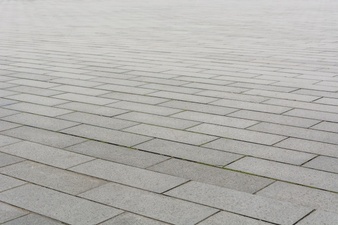Ever heard of breeze blocks? You may not know them by name, but you’ve probably seen them in all kinds of designer building projects. That’s because breeze blocks have long been a staple of building projects where you want to let in light, air, and yes – the breeze. These stylish yet functional building blocks are brimming with vibrant texture, sharp lines and rich colour, and will complement a diverse range of projects. Here’s what you need to know about these striking feature blocks – and why you should choose them for your next build.
How long have breeze blocks been around?
It might surprise you to know that breeze blocks have been around for over 50 years, and were considered a 1970s icon when they were first in use. Nowadays, the iconic breeze block has been revitalised into a modern-day classic that creates unique walling and feature solutions.
How do breeze blocks work?
It’s pretty simple – the blocks are designed and crafted with vents through the middle of the block, to allow breeze, air and light to permeate into a space. The open pattern allows for increased ventilation and light without sacrificing privacy, screening and sun protection. They’re the ultimate bridge between a completely enclosed area and an open area – allowing airflow and circulation into a closed off space.
Where can you use breeze blocks?
Breeze blocks are suitable for both indoor and outdoor applications, and can be used both horizontally and vertically. They are only suitable for non-load-bearing applications, however. Use them to increase light and ventilation in:
- Privacy screens
- Room partitions
- Patios and outdoor living areas
- Features and feature walls
- Fences
- Structural landscape designs
- Residential and commercial projects
What are the advantages of breeze blocks?
Breeze blocks have experienced a strong resurgence in popularity in recent years, with quality innovations to delight any homeowner. Breeze blocks will take the movement of light and air through your project to the next level, and provide plenty of reasons to choose them:
- They save energy, as you won’t have to spend as much or air conditioning and lighting.
- They are made of strong and durable concrete that will provide structural strength and last.
- They are non-flammable.
- They are lightweight yet strong, allowing for ease of construction without sacrificing strength and stability.
- They are versatile and can be used in many applications.
- They come in a wide range of styles, colours, textures and finishes, allowing you plenty of choice to complement your area.
- They are manufactured to strict Australian standards.
- They are created with high quality oxide pigments to provide long-lasting colour.
- Additives are added to the concrete mix to reduce water absorption.
What care and maintenance do breeze blocks need?
Pretty much none. Breeze blocks have a low to zero maintenance requirement. If they become stained or marked, all that’s needed is a quick wipe over with a cloth.
Are breeze blocks expensive?
Breeze blocks are quite affordable – and as they are very durable and long-lasting, they are a great investment when you spread the cost over many years.
What choices do I have when it comes to breeze blocks?
You can choose from a wide variety of unique and contemporary colours and finishes with your breeze blocks – have a look at some of your options here:
What do I need to consider when using breeze blocks?
One important thing to keep in mind is that breeze blocks don’t allow for complete privacy, so shouldn’t be used in spaces where that is important. They can also let in dirt and dust, so it’s best not to use them in walls directly facing a busy street, a dusty area or a sandy beach. If you don’t want excessive sunlight, don’t install them in walls directly facing the sun. of course, if you do want sunlight and warmth coming in, go right ahead – that’s what they’re for, after all!
For a range of the highest quality breeze blocks to use in your next project, check out National Masonry’s selection here.
